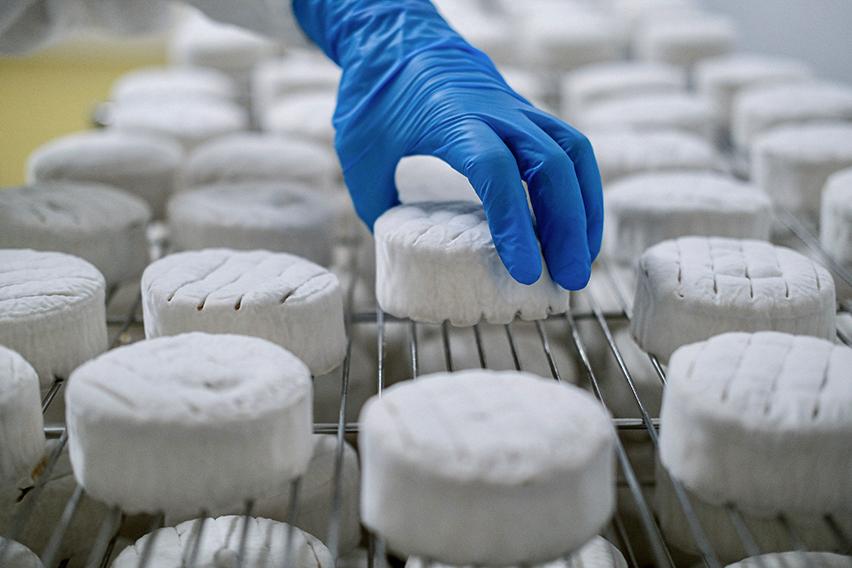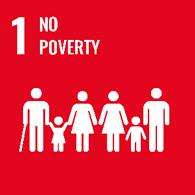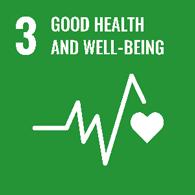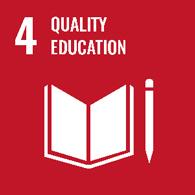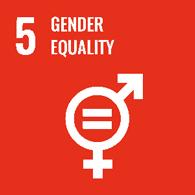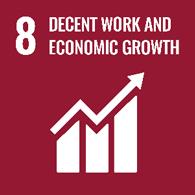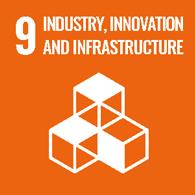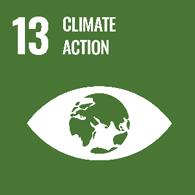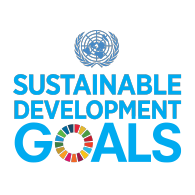UN Goal 12 - Responsible consumption and production
Breadcrumb
Child page UN Goal 12
Introduction UN Goals
In 2015, under the aegis of the United Nations, the international community adopted Agenda 2030. It lays out 17 global goals together with the call to implement measures to achieve those goals. In particular, the Sustainable Development Goals No Poverty, Health and Well-being, Quality Education, Gender Equality, Decent Work and Economic Growth, Industry, Innovation and Infrastructure, Resonsible Consumption and Production, Climate Action and Peace, Justice and Strong Institutions are of great importance to Messer. Both global and local projects and activities, as well as initiatives supported by Messer, contribute to various sustainability goals. The individual projects contribute to long-term improvement and can be viewed here:
Accordion UN Goal 12
Greenhouse gas emissions
In accordance with the GHG (Greenhouse Gas) Protocol, for calculation purposes we classify greenhouse gases into three categories: direct emissions (Scope 1), indirect emissions from procured energy (Scope 2), and other indirect emissions in the upstream and downstream supply chain (Scope 3), measuring the emissions in terms of CO2 equivalents (CO2e).
For 2021, the following changes apply to the calculation of greenhouse gas emissions:
- Dual calculation approach for Scope 2, presenting both the location-based method as previously used and a new, market-based method.
- Extension of the scope of calculation for Scope 3, including additional categories recommended by a joint working group comprising industrial gases companies and industrial gases associations.
In the financial year 2021, the total greenhouse gases emitted directly and indirectly as a result of Messer’s activities in production and logistics worldwide, i.e. Scopes 1 & 2, stood at 5.46 million metric tons of CO2e. That was 680,000 metric tons more than in the previous year, when the combined value was 4.78 million metric tons of CO2e. This 14.2 percent increase is primarily attributable to two factors: First, our sales growth, and second, the less favorable CO2 factor for energy in Asia due to the lower quality electricity mix caused by the electricity shortage.
The CO2 emissions intensity of Messer’s worldwide activities (Scopes 1 & 2), measured as the ratio CO2e per Euro of sales, stood at 1.55 CO2e/€ in 2021, slightly above the combined value of 1.53 CO2e/€ measured for 2020.
Scope 1
Scope 1 includes direct emissions generated in our production facilities. In particular, this applies in connection with the production of hydrogen, carbon dioxide and nitrous oxide. Other direct emissions are generated in logistics by the combustion of fuel. In 2021, Scope 1 for Messer worldwide totaled 240,300 metric tons of CO2e. In 2020, the comparable value was 220,600 metric tons of CO2e. This 8.9-percent increase is attributable to Messer’s strong sales growth, which was over 10 percent in 2021.
In 2021, the bulk and cylinder fleet of Messer including Western Europe consumed 35.37 million liters of diesel fuel. In 2020, that value was 29.95 million liters. Our fleet traveled a total of 114.30 million kilometers in 2021, versus 96.98 million kilometers in 2020. The increase of more than 10 percent is in line with the growth of our activities in 2021. The average rate of diesel fuel consumption once again remained nearly unchanged; in 2021 it was again 0.309 liters per kilometer traveled.
We express the trend in distance traveled per metric ton (payload) of liquefied industrial gases or cylinder gases for Messer worldwide in 2021 with an index value of 99.4; in 2020 the index value was 101.9. The slight decline in this parameter resulted from, among other factors, the fact that the seamless supply of medical oxygen during the coronavirus crisis also required additional routes in 2021.
As in 2020 already, the year under review 2021 was marked by challenges arising from the coronavirus pandemic. From a logistical perceptive, ensuring supply, notably of medical oxygen, to our customers was especially challenging. It was our top priority. Despite all of our efforts to work efficiently, however, we were unable to reach all of the targets that we had set for ourselves relative to the KPIs in the logistics area.
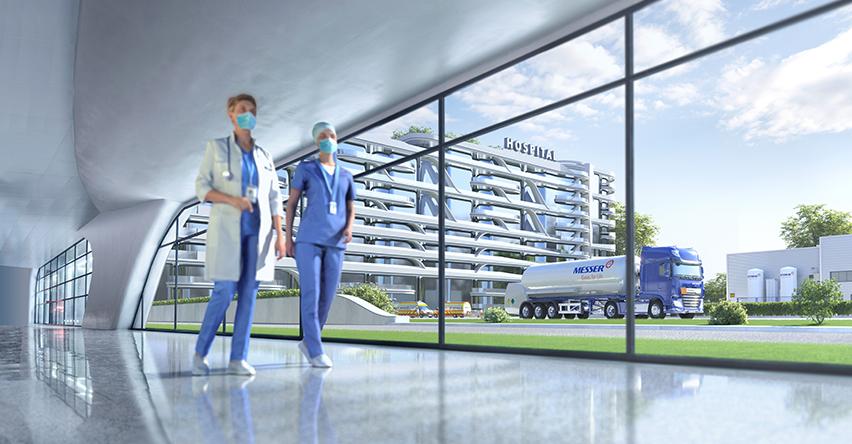
In Croatia, the Czech Republic, Serbia and China, Messer produces nitrous oxide (N2O). This gas is used in medical applications and in the electronics and food industries. In Switzerland and China, Messer operates a total of six company-owned hydrogen plants. Three other hydrogen units located on our customers’ premises in Austria and Hungary (on site units) are not included in the calculation of our own CO2 footprint. In its gaseous state, hydrogen is used in many industries – e.g. as a food additive in hydrogenation or fat-hardening, in heat treatment processes, as an energy source, or even as an emissions-free fuel.
Scope 2
Indirect CO2 emissions under Scope 2 relate to the production process of the purchased electricity. For Messer Group-wide in 2021, that value, location-based, increased from 4.51 million metric ton in 2020 to 5.22 million metric ton in 2021, of which 1.47 million metric tons related to Messer in North and South America. This increase of 0.71 million metric ton growth in 2021 vs. the previous year’s figure is primarily attributable to the strong growth of our business as well as the increase of the emissions factor in Asia: as long as the global trend toward more green electricity continues, we will also continue to purchase more emission-free electricity. As a result, our indirect CO2 emissions under Scope 2 – which make up more than 90 percent of the total emissions generated from our own activities – will follow the downward trend, until the long-term goal of climate neutrality is reached.
With regard to the air separation units that we develop and build, we pay particular attention to their energy-efficient design and the cost-effective procurement of energy used to operate them.
For example, to optimize our electricity procurement, we use calls for tenders throughout Europe, long-term framework agreements, and continuous monitoring of futures and spot markets. A centralized team provides advice and support to our subsidiaries when they purchase electrical power. That team also uses regular comparative analyses to study electricity costs and the use of renewable energies.
The location-based emissions factor increased by about 3.3 percent versus the previous year; this was mainly due to our activities in Asia. Our absolute global CO2e footprint increased by about 15.6 percent in 2021, because we consumed in total about 12 percent more electricity for the product volume manufactured.
In 2021, our production units consumed 11.9 TWh of electricity worldwide, which was 1.3 TWh more than in 2020. This change was due to a strong increase in electricity demand in all regions: relative to 2020, it rose by 14.8 percent in Asia, by 10.3 percent in Europe, and by 9.7 percent in North and South America.
Despite efficiency improvements and the procurement of renewable electricity, e.g. through power purchase agreements (PPA), indirect CO2 emissions (Scope 2) continued to rise Group-wide. The reasons for this are the growth in sales through new air separation units along with the higher utilization of existing units.
In view of the decarbonization program and the goal to reduce greenhouse gas emissions, alongside the previously used “location-based" method, the “market-based” calculation of GHG emissions pursuant to the GHG Protocol is being used for the first time. For 2021, the GHG emissions were estimated to be 5.48 million metric tons.
Scope 3
The emissions documented under Scope 3 are indirect emissions unrelated to the purchase of electricity. This applies to the major upstream and downstream activities. Examples of this include the purchase of commodities, services and capital goods, the consumption of other energy, and the electricity transmission losses not included in Scope 1&2, as well as business travel, employees’ commute to and from work, and products sold.
The Group-wide total CO2 equivalence value for the greenhouse gas emissions under Scope 3 in 2021 was 2.95 million metric tons. This was significantly higher than the comparable figure for 2020. The latter accounted only for other energy consumption, business travel and the employees’ commute to and from work, however. After a thorough review of our previously applied estimation method, we have started to revise the estimate of the main categories of Scope 3. This applies to all main categories that significantly impact the integration of upstream and downstream supply chains related to our activities.
Water consumption
Most of the water that we consume is used to cool the compressors in our air separation units. In 2021, our Group-wide water consumption was 17.5 million cubic meters, which represents an increase of 900,000 cubic meters over financial year 2020. This 5.4-percent increase is attributable to the increase in production in 2021.
Our main manufacturing processes – air separation, CO2 purification and liquefaction – need no water within the actual production process streams. But they do generate a great deal of heat, mainly during the compression of gases. To carry that heat away, most units have an open cooling water circuit: the cooling water absorbs heat from the respective sources and discharges it to the atmosphere in an open cooling tower. There, part of the circulating water evaporates and another part is removed to prevent insoluble components from thickening. Fresh water must be fed back into the system to replace the water that is evaporated and/or removed. This results in the only direct water consumption of our manufacturing processes. The quantity of make-up water added is directly dependent on a unit’s electricity consumption. It averages about two to three cubic meters per hour per megawatt of electrical power.

Energy management system certifications
Our commitment to environmental protection is also reflected by our quality management system, which regulates our operations the world over. We are certified according to ISO 14001 and RCMS in 59 consolidated companies. ISO 14001 is an internationally recognized standard developed by the International Organization for Standardization (ISO). It defines requirements designed to help organizations establish, implement, maintain and continuously improve their environmental management systems. RCMS certification serves the comparable purpose and function for our American production sites.
Customer service
We act sustainably to meet our customers’ needs, which include the reduction of their own carbon footprint. We achieve this through the impact of our gas applications on their production processes, through an efficient supply of gases – via on site units, for example – and through the use of emission-free or low-carbon products such as green hydrogen.
In customers’ industrial processes, our “Gases for Life” provide for greater safety, efficiency, quality, capacity and environmental compatibility and / or reduce the associated emissions and costs. To fully realize these potentials, we work closely with our customers, supply application engineering equipment and expertise, and help design and optimize processes. In addition, we provide our customers with process development support.
Messer, including its Western European companies, signed more new bulk contracts than in the previous year: In 2021, 31.1 percent of new contracts with explicitly positive overall effect on the environment were signed; in the 2020 financial year, that figure was 29.7 percent.
The increased number of new contracts based on applications with positive effects on the environment include, among other things:
- Increase in applications and installations with oxyfuel in Europe, especially in the non-ferrous and glass segments
- Continued implementation of cryocondensation units
- Further development of oxyfuel and hydrogen-oxygen combustion technology, both in the company’s own competence center and through sponsored R&D projects
In addition, the installation of on site units that produce industrial gases eliminated the need for some bulk deliveries, thereby reducing emissions by 4,800 metric tons of CO2e in the financial year 2021. That represents an additional 14-percent reduction relative to 2020 – despite growth that was observed in the context of increasingly dynamic activity overall.
In 2021, Messer further intensified its commitment to clean hydrogen: A cooperation agreement was signed with Siemens Energy to collaborate on green hydrogen projects in the 5-to-50-megawatt range for industrial and mobility applications. Messer in Spain has already applied to the Spanish government for funding for three such green hydrogen projects in the chemical complex in Tarragona.
Together with Toyota Tsusho, Messer is offering the “One-Stop Shop” to bus operators. The concept bundles all the products and services required to operate hydrogen-powered, fuel cell electric bus fleets.
Messer is part of the joint venture “HyDN” in the district of Düren, Germany, where a new production facility for green hydrogen is being installed. Messer’s expertise in the efficient operation of gas production facilities and refueling infrastructure will help ensure the effective operation of fleets of fuel cell electric buses and trains.
In Spain Messer participated in a conference in Reus on hydrogen and sustainable mobility organized by the Chair for the Promotion of Business Innovation, the URV Foundation (University of Rovira i Virgili), and Hydrogen Valley of Catalonia. Companies such as Repsol, Enagas, Messer Ibérica and Technip explained their commitment to the development of the value chain for green hydrogen. Jordi Soler, head of hydrogen business development for Messer in Spain, presented the company’s activities in the sustainable mobility area and emphasized the importance of the hydrogen value chain as an energy vector.
In the USA, Messer Industries has substantial experience in hydrogen for vehicle refueling applications. At a car manufacturing plant in Greer, South Carolina, Messer supplies the technology and the hydrogen for one of the largest fleets of forklift trucks and other industrial handling equipment in the USA. In 2021 the facility installed by Messer was extended and the service and hydrogen supply contracts were successfully renewed.
Serbia: Welding gases for solar thermal energy
In 2019, Messer supplies argon, methane, oxygen and acetylene to Master Solar in Šimanovci near Belgrade. The company produces equipment that makes thermal use of the sun’s energy. Along with collectors, this also includes stratified charge storage tanks for water warmed by the sun. Master Solar’s high-quality units have proven their worth even under extreme climate conditions. The gases are used for various welding processes, including CMT (cold metal transfer) welding, which produces particularly high-quality, practically splatter-free welds.
China: Neutralizing and saving with CO2
In 2019, Messer supplies CO2 and hardware to Gezhouba Environment & Engineering to neutralize alkaline wastewater. The company cleans sludge pumped from Dian Lake. The largest inland lake in Yunnan Province is polluted due to over-fertilization. An alkaline, calcareous agent is used to extract water from the sludge. That process wastewater is then highly alkaline and contains about 500 milligrams of lime per liter. Carbon dioxide, introduced with tubular reactors built by Messer, lowers the pH and softens the water. Unlike the previously used hydrochloric acid process, this method releases no chloride ions. Now the treated wastewater can be pumped right back into the lake. And process costs have also been reduced by more than 30 percent.
Slovenia: Water purification conference in Slovenia
In June 2019, together with the Institute for Environmental Protection and Sensors IOS, Messer Slovenija organized a professional symposium on the purification of process water and wastewater in the paper and metal industries. Experts from Messer showed participants the possible uses of industrial gases and how they affect the processes of conditioning, purification and neutralization of industrial water, including specific examples from industrial practice.
Brazil: Sustainable CO2 production in Jandaia do Sul
Messer further expanded its carbon dioxide (CO2) capacities in the south, southeast and mid-west of Brazil: at our Jandaia do Sul site, pure, food-grade CO2 is being produced from maize for the first time in Brazil - with production taking place throughout the entire year and without seasonal interruptions. The sustainably produced CO2 allows us to meet the increased demand across various industries. The decision to expand CO2 capacities at the Jandaia do Sul site is a clear commitment on the part of Messer to further expansion in the Brazilian market. Our CO2 production site links to the rail network to facilitate logistical access to Curitiba, São Paulo and the ports of Santos and Paranaguá as well as the entire southern region.
China: More environmentally friendly iron production
Xianggang Messer signed a new gas supply contract with its Joint Venture partner and, at the same time, largest pipeline customer, Xiangtan Iron & Steel, for the construction of a VPSA (Vacuum Pressure Swing Adsorption) unit. The new production unit will facilitate economically efficient production of oxygen to meet the customer’s increased demand for oxygen enrichment for their blast furnace. Increasing the oxygen enrichment ratio means reduced consumption of coke, which leads to greater efficiency and lower emissions in the iron production process.
Czech Republic: New nitrogen production facility for Energoaqua
Messer put another nitrogen production unit into operation for Energoaqua in Rožnov pod Radhoštěm. Energoaqua is a service provider and supplier of electricity, heating and industrial gases for a range of companies in the adjacent industrial park. The company has been operating an on-site nitrogen production unit installed by Messer for approximately ten years. Demand at the industrial park has increased greatly since then, which is why Messer has been supplying Energoaqua with additional liquid nitrogen and other industrial gases by tanker for years. The new on-site production facility allows Energoaqua to produce the nitrogen independently with high reliability of supply – with the additional benefit of eliminating the CO2 emissions and noise pollution associated with nitrogen deliveries by road tanker.
France: New CO2 recovery plant in Lacq
Messer is building a second CO2 purification and liquefaction facility in Lacq with a capacity of 60,000 metric tons a year. The two storage tanks for our new CO2 recovery plant in southwest France were delivered at the beginning of July 2021. The tanks – 29 meters in length and weighing 53 metric tons – were manufactured in Turkey and transported to Bayonne by sea. From there they were transported onwards by truck, which was done at night in order to minimize the impact on traffic. Work on the construction of our new CO2 recovery plant began in March 2021. The start of industrial production is planned for July 2022.
The additional production capacity will allow Messer to further enhance security of supply of CO2 for its customers in France and Spain.
Germany: New nitrogen supply system at Nowega
On October 1, 2021, Messer took over regular operation of a nitrogen production facility at Nowega in Rehden, one of the transmission system operators for natural gas in Germany. Nowega uses the nitrogen to ensure the supply of ‘L-gas’ quality natural gas in its network area even in periods of peak demand. Thanks to the nitrogen production facility, the previous road tanker deliveries are no longer necessary, reducing the strain on the road network and cutting noise pollution. Further CO2 emissions are also avoided thanks to the fact that the nitrogen does not require to be liquefied as part of the on-site production process. In total, Messer and Nowega are contributing to environmental protection by reducing climate-damaging emissions by up to 16,400 metric tons a year. Moreover, the nitrogen production facility has significantly increased Nowega’s security of supply of natural gas.
Serbia: CO2 production plant in Rusanda
Messer is investing in a highly efficient CO2 purification and liquefaction facility in Vojvodina. The crude CO2 gas – with a high CO2 concentration and high pressure – comes from a natural gas processing plant. At this facility, the sour gas is conditioned by separating the CO2 so that it can be fed into the natural gas network. At our CO2 plant, the relatively high methane content in the crude gas is used to generate electrical and thermal energy. This makes the production of 40,000 metric tons of high-purity liquid CO2 per year particularly economically efficient. The plant, which is due to go into operation in the fourth quarter of 2022, will allow Messer to further strengthen its provision of a reliable and cost-effective supply of CO2 to customers in Serbia and the region. It will also create the conditions for a significant expansion of our customer base in the region.
Serbia: Expansion of oxygen supply at Metalfer Steel Mill
Metalfer Steel Mill is one of the leading manufacturers of steel products for the Serbian construction industry and the only producer of reinforcing steel in Serbia. In view of the increased demand for industrial oxygen, Messer and Metalfer Steel Mill signed a new long-term supply contract in 2021. In future, the oxygen for Metalfer will come from a dedicated VPSA (Vacuum Pressure Swing Adsorption) unit, which is scheduled to go into operation at the end of August 2022. The solution implemented on site will make the transportation of oxygen by road largely superfluous. This will reduce the ecological footprint and lower the company’s costs.
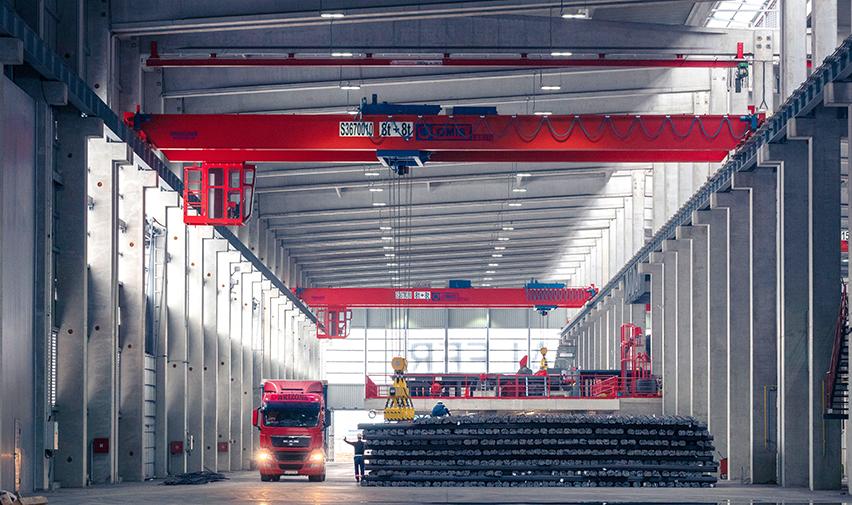
Slovakia: First facility for the production of argon from synthesis gas at Duslo
At the Duslo, a.s. site in Šaľa, Messer put into operation an argon production facility based on residual gas from ammonia synthesis for the first time. The purge gas contains the rare gas argon as well as methane, nitrogen and hydrogen. These gases are also recovered by the facility in accordance with Duslo’s quality requirements. Technically, the facility features fully automated operation and maximum energy integration. In full operation, an annual reduction of up to around 500 metric tons of CO2 emissions can be achieved thanks to shorter transportation routes. Moreover, this investment allows us to increase our argon capacities and further strengthen our market position in this segment.
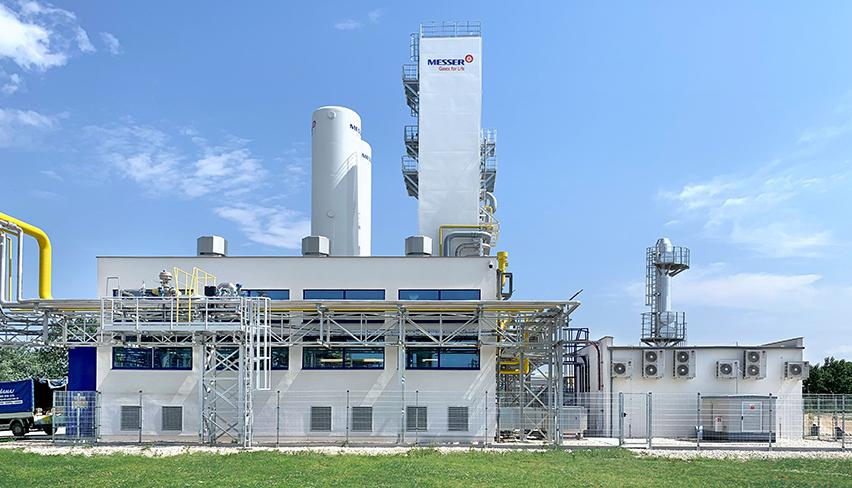
Slovenia: New oxygen production facility at Steklarna Hrastnik
Steklarna Hrastnik develops and manufactures engineered glass products from one of the clearest types of glass in the world. This long-established company has been using oxygen in the production process for over 50 years, and since 2013 it has been harnessing the advantages of our oxy-fuel technology. In 2019, Steklarna Hrastnik and Messer signed a supply contract for oxygen from an on-site unit (CryoGox), which went into operation at the beginning of September 2021. Steklarna Hrastnik uses the pure oxygen generated by the on-site unit in glass production in its new G furnace, with a 60 percent reduction in the carbon footprint. Steklarna Hrastnik wants to convert its processes to green technologies, and the new on-site oxygen production unit is another step in this direction.
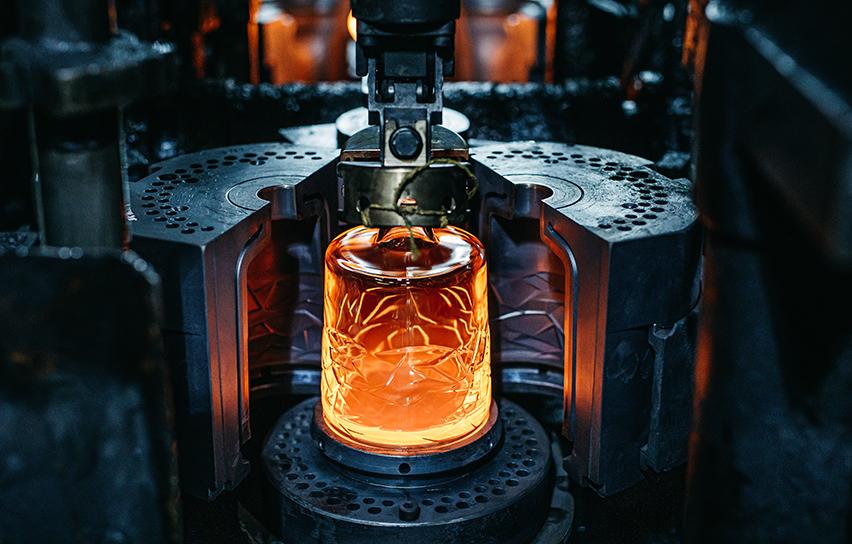
Spain: Successful modernization of CMG-II air separation unit in Vilaseca
The end of November 2021 saw the successful completion – on time and on budget – of the modernization of the CMG-II air separation unit (ASU) in Vilaseca, in the southern part of Tarragona’s petrochemical industrial park. The main aim of the project was to reactivate an existing air separation unit in an environmentally and, at the same time, commercially attractive way. This was achieved by significantly improving the specific energy consumption of the unit, previously assessed as ready for decommissioning. Messer intends to operate the now completely renovated unit for at least the next ten years. This has made it possible to avoid all the environmental impacts that would have been associated with the construction of a new unit.
The project involved completely overhauling all the process machinery, improving the control system, checking all the pressure vessels, removing obsolete equipment and components and carrying out a comprehensive technology upgrade. The latter comprises using a completely new Front End with a new air compressor and a new adsorptive air purification system. All the work was completed in a record time of ten months and without a single safety or environment-related incident.
The CMG-II ASU was built in 1977. Since the Messer-IV ASU was commissioned in 2009, the CMG-II ASU has been used as a backup supply for our industrial gases pipeline network in the Tarragona Industrial Park.
USA: Construction of a new air separation unit in Texas announced
Messer announced the construction of an air separation unit (ASU) in central Texas aimed at further expanding its strong supply network for gases in the southwestern part of the country. The new ASU will produce medical and industrial gases that are indispensable for hospitals, food processing and many sectors of industry. The new ASU will operate substantially off energy supplied from an onsite solar panel array. It is the first Messer plant to be powered by a co-located renewable energy source, helping to reduce the company’s carbon footprint.
Vietnam: New nitrogen generator and pipeline connection for solar cell production facilities
In 2021, Messer further consolidated its leading role as a supplier of gases to the solar industry in Vietnam. In October 2021, Messer signed a new nitrogen generator contract with JA SOLAR, a global leader in the manufacture of high-performance photovoltaic products, for their solar cell production facility in Bac Giang. Messer also signed a contract for the piped supply of nitrogen to Trinasolar’s new solar cell production plant, which is located next to Messer’s air separation unit in Thai Nguyen. With these investments, we are ensuring a reliable gas supply to both these global market leaders in the solar industry, while at the same time reducing the carbon footprint of our nitrogen and making solar cell production – so important for green energy – “even greener”.
Sustainable handling of nitrous oxide
Nitrous oxide is both a widely used anesthetic and an extremely powerful greenhouse gas. Messer works together with the Swedish medical technology firm Medclair to prevent unnecessary release. Medclair’s product range includes stationary and mobile devices that capture the anesthetic exhaled from the lungs of patients. These “destruction units” use heat to break the nitrous oxide down into its harmless components – nitrogen and oxygen. Messer and Medclair signed a partnership agreement in December of 2021: Medclair supplies the technology for N2O neutralization; Messer supports sales in the healthcare sector and develops additional markets for the climate protection devices.
Hungary – High-performance compressor for energy efficiency
In its air separation unit at the BorsodChem site, Messer in Hungary replaced three existing compressors with a new high-performance turbo-compressor. The latter went into operation in March 2021 and has been providing far greater energy efficiency ever since. The production capacity has been increased as well.
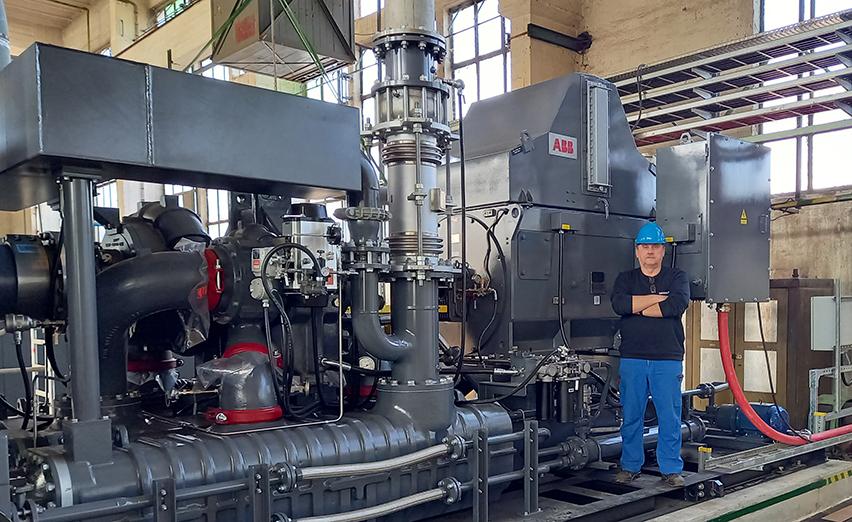
Brazil – Eco-friendly tandem trailer
In northeastern Brazil, Messer is using a new tandem tractor-trailer to transport liquid oxygen. The trailer was developed with the long routes in the region in mind. Thanks to its extended tank capacity, it can satisfy demand with fewer delivery runs. That raises productivity, enables greater sustainability in logistics, and generates less CO2 emissions.
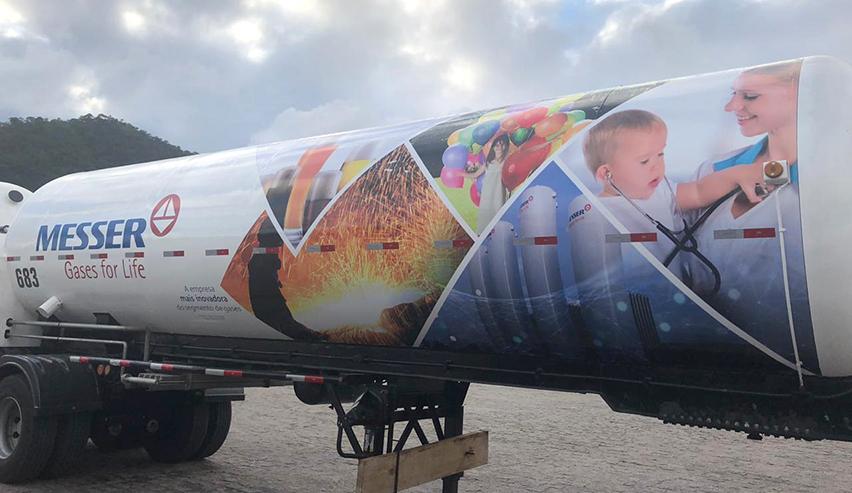
Poland – Optimized filling and air separation
With the support of ACKLogic of Spain, an automated trailer filling system was installed at Messer’s sites in Rybnik and Turek, Poland. It not only simplifies the work of the drivers but also makes the filling process safer and more reliable. A new software-based control system was also used to optimize the air separation process in the production units in Rybnik and Turek. The automated control system makes it possible to reduce energy consumption as well as product losses from venting while maintaining a high argon recovery rate.
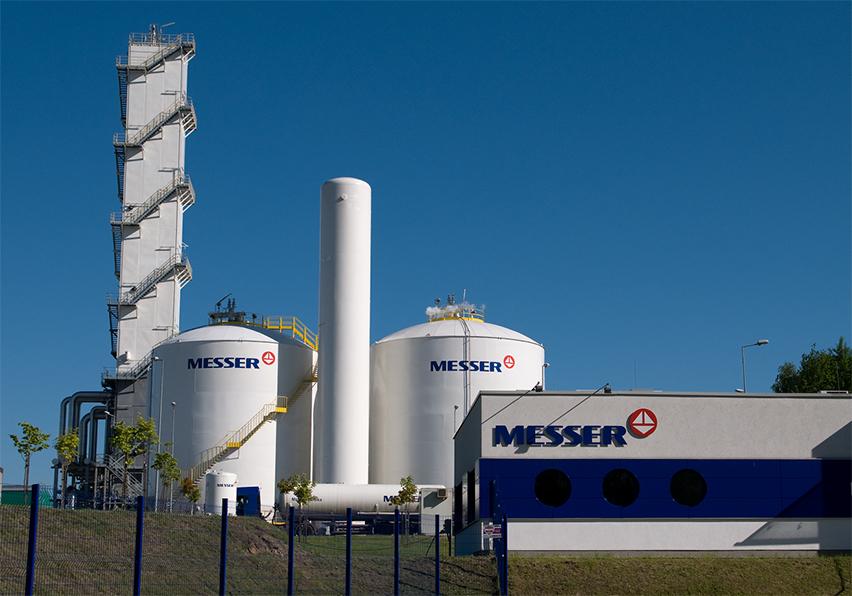
Energy & quality management
Our commitment to environmental protection is also reflected in our worldwide Quality Management System. In 2021, 61 consolidated companies were certified according to ISO 14001 or Responsible Care Management System (RCMS); that was two more than in the previous year. ISO 14001 is an internationally recognized standard developed by the International Organization for Standardization (ISO). It defines requirements designed to help organizations establish, implement, maintain and continuously improve their environmental management systems. RCMS certification serves the comparable purpose and function for our American production sites.
France – Eco-friendly cooling alternative
In May 2021, Messer started up a public EcoLIN station at the Rungis wholesale market near Paris. It was installed on the site of the world’s largest wholesale market for fresh produce. Vehicles that use cryogenic gases to cool their refrigeration compartments can top up their coolant supply any time of day or night – rapidly, safely and automatically. Liquid nitrogen offers an eco-friendly, low-noise cooling option that emits neither particulates nor NOx or CO2.
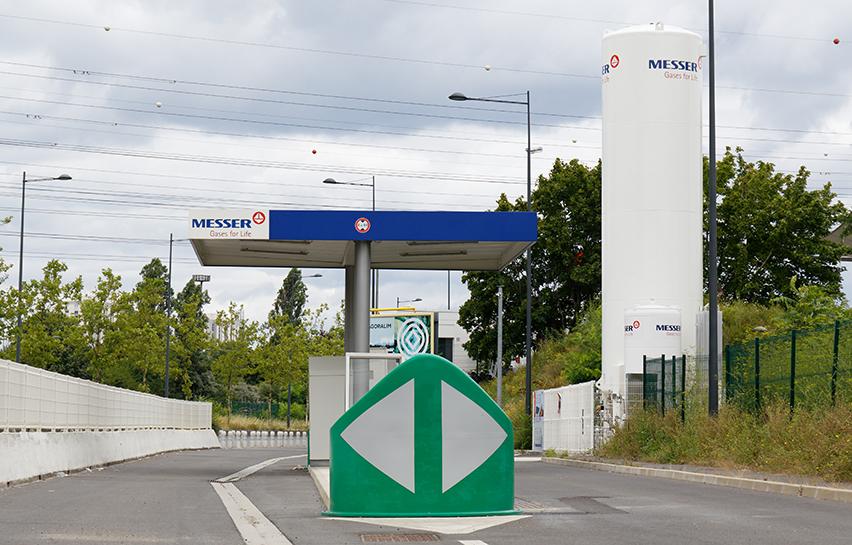
Canada: ISO-certified CO2 recovery unit
Together with HTC Extraction Systems, ASCO delivered a unit for recovering carbon dioxide (CO2) to an Alberta-based applied research organization. It extracts six metric tons of CO2 per day from the flue gas of a natural gas-fired power plant. It is the world’s first CO2 recovery plant certified according to ISO 14034 ETV. The certification was carried out by the independent consulting firm 350Solutions.
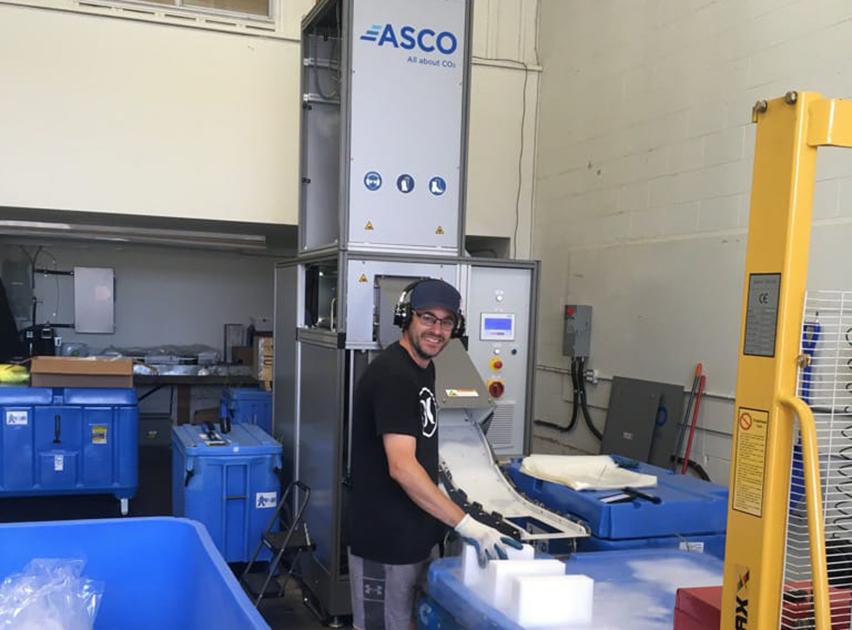
Canada: Eco-friendly cooling technology with CO2
As a refrigerant for passenger car air conditioners, carbon dioxide (CO2) is a climate-friendly alternative to the tetrafluoroethane that was used in the past. With its cylinder gases segment, Messer in Canada is the country’s key supplier of CO2 in the refrigerant quality required for this application.
France: CO2 for sustainable wastewater treatment
At its site in southwestern France, a company specialized in the production of baby food uses CO2 and the Neutrabox injection system from Messer to neutralize alkaline wastewater. This solution is more eco-friendly, more economical and safer than using mineral acids. It also controls pH more effectively and precisely.
Germany: EcoVap reduces ecological footprint
At FKM Sintertechnik in Biedenkopf, Messer installed new liquid nitrogen tanks and an EcoVap unit to make use of cooling energy. The gas is used for inertization in various sub-processes. The EcoVap unit takes the cold released by the liquefied gas in a cooling plant and transfers it to the circulating coolant. This enables FKM to save energy, cut costs and reduce the size of its ecological footprint. The company also uses shielding and process gases from Messer.
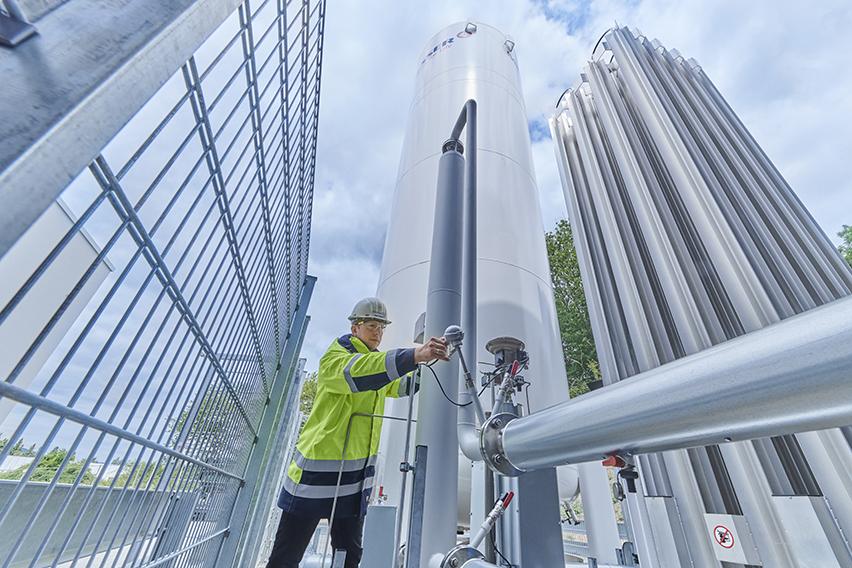
Germany: Hydrogen for public bus service test
In late summer 2021, Messer supplied hydrogen for the trial operation of a fuel cell-powered public bus in the Waldshut-Tiengen district. The four-week test phase successfully investigated the practical feasibility of the vehicle. The bus carried passengers on established routes in normal operation. One fill-up with 38 kilograms held enough fuel for up to 400 kilometers, which more than sufficed for the distance typically traveled over the course of a day, about 300 kilometers.
Hungary: Gases for flexible solar modules
The Swiss company Flisom specializes in the production of ultralight and flexible solar films. At its film production operation in Hungary, Flisom uses argon, helium and nitrogen from Messer. Flisom’s production technology makes it possible to minimize material and energy requirements for a product with both low levelized cost of electricity (LCoE) and high energy output.
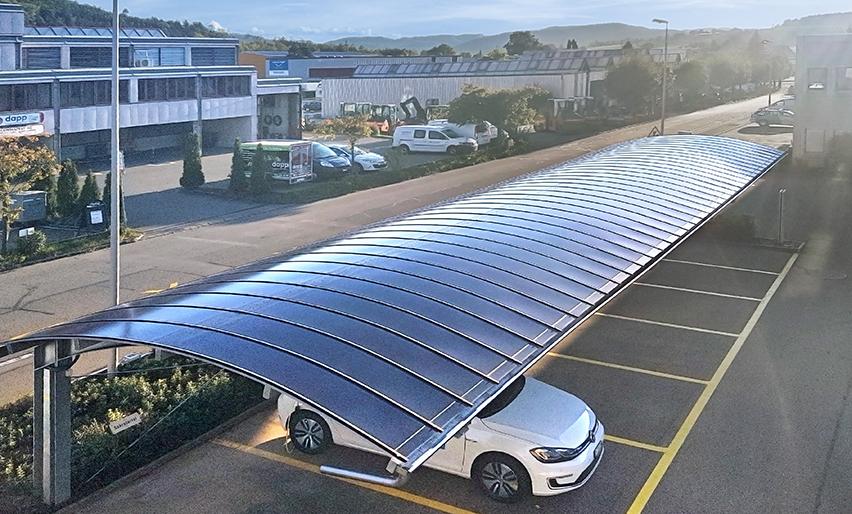
Poland: Oxygen for dairy wastewater treatment plant
Mlekovita Dairy in Baranów has been treating its sewage sludge with oxygen from Messer since 2016 because the addition of oxygen increases the plant’s efficiency. Otherwise, the company would have had to expand its wastewater treatment plant. The gas also helps reduce equipment requirements and the use of chemicals. In a test series, Messer had previously determined the optimal process conditions. The dairy was able to significantly reduce the quantity of wastewater it produces.

Slovenia: On-site oxygen generation benefits glass maker
Messer installed an oxygen production unit in Hrastnik for the glass manufacturer Steklarna Hrastnik. The Slovenian company has been using oxygen to melt glass for more than 50 years now. Previously, the gas has been delivered in tank cars. The new on-site unit significantly reduces the cost and CO2 emissions associated with transport while raising supply reliability at the same time. The use of oxygen increases combustion efficiency in the melting furnace, thereby also lowering CO2 emissions.
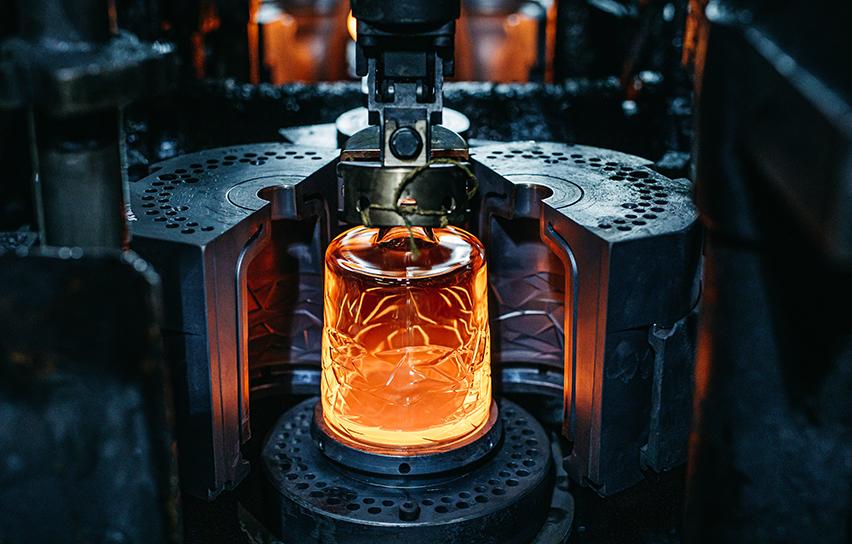
Spain: Refrigeration recycles refrigerant
To recycle refrigerators and freezers, Industrias López Soriano (ILSSA) buys liquid nitrogen from Messer. A plant in Zaragoza uses the cryogenic gas to separate out the environmentally harmful refrigerants in a two-step process. ILSSA has more than five recycling plants in the autonomous region of Aragon, which receive waste materials and waste products from all over Spain. Using state-of-the-art technology, ILSSA extracts an extremely wide range of materials from the waste and returns them to the industrial production chain as raw materials.
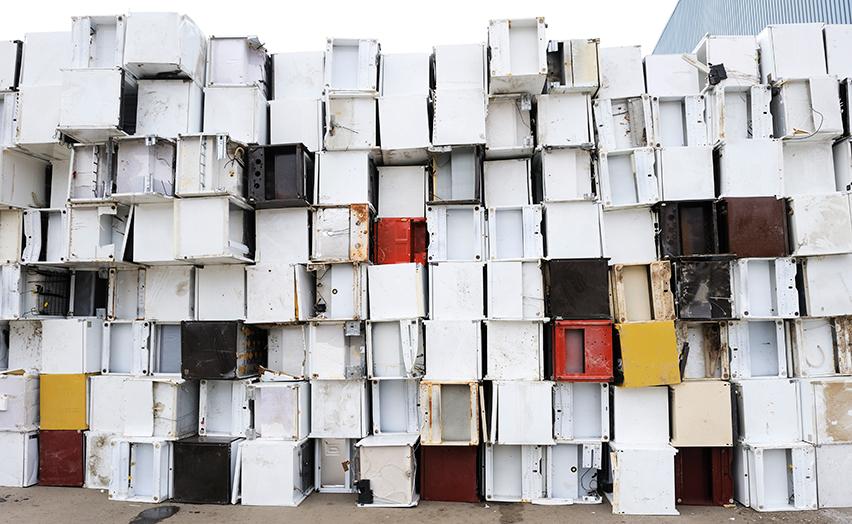
France: Dry ice for food deliveries
When delivering frozen food to end customers in Greater Paris, the retail chain Casino Group’s subsidiary O’logistique relies on SnowDrop units from Messer and MiniCryo boxes from Olivo Cold Logistics. Dry ice snow securely stored in the lid keeps the contents of the delivery boxes reliably cooled for up to 18 hours. A Messer-patented SnowDrop machine produces fresh dry ice snow and automatically feeds it into the lids.
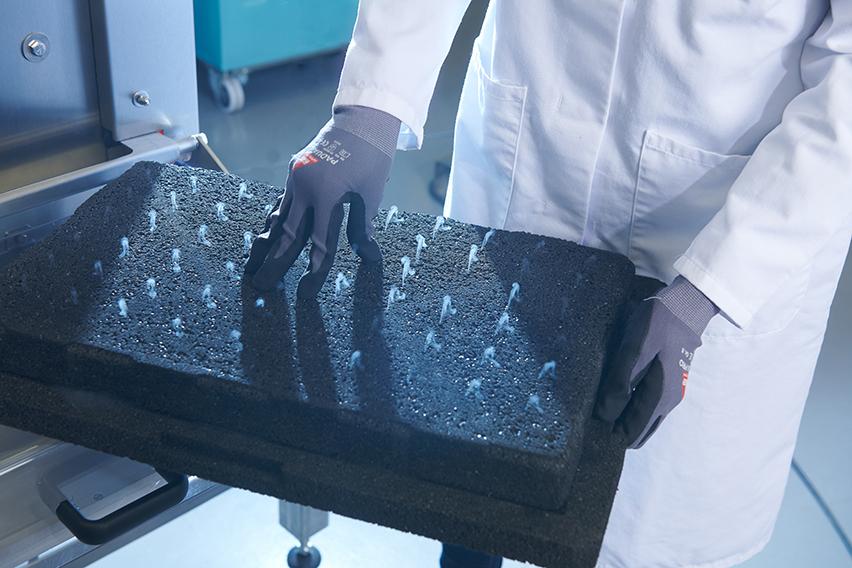
Germany: Proteins from sunflowers
When pressing sunflower oil, only about 40 percent of the seed weight is used for food. Until recently, the remaining components, which contain valuable fibers and proteins, were processed into animal feed or even discarded. The German company Sunbloom has developed a process that now makes it possible to recover proteins from sunflower seeds. Messer supplies Sunbloom with high-purity test gases used in laboratory analyses.

Switzerland: Flavor protection for vegan cheese
The food manufacturer New Roots in Oberdiessbach, Switzerland, has been using plant-based materials to produce alternatives to soft cheese, cream cheese, cheese spread, crème fraîche, fondue and yogurt for the past six years. The protective gas Gourmet N70 is used to package the various cheese spreads. It extends product shelf life, thereby also preventing food waste.
